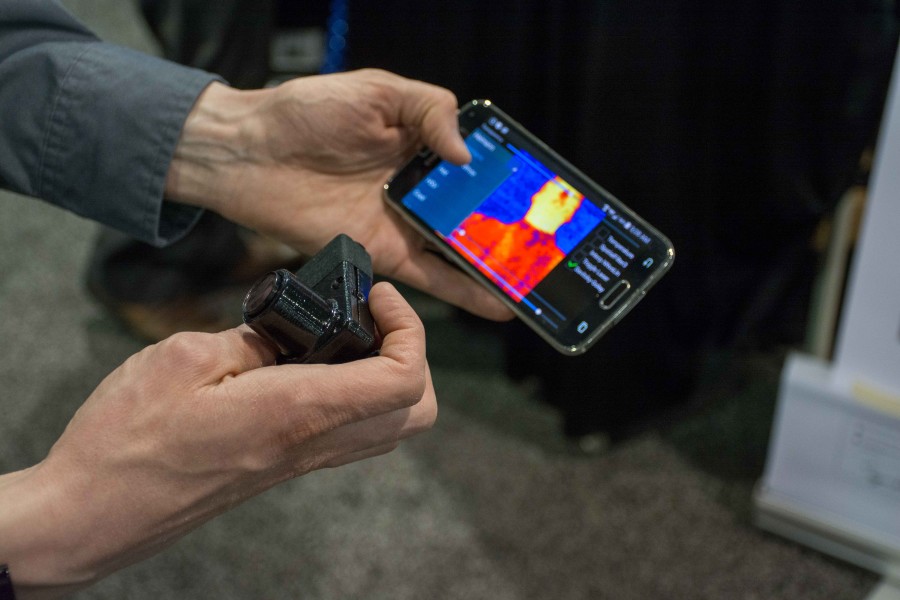Turning up the heat
The HemaVision, an affordable thermal imager, is currently in the midst of a Kickstarter campaign.
It is difficult to imagine a sixth sense—sight, touch, taste, sound and smell seem to encompass everything that relates to human experience. However with the HemaVision, a new thermal imaging device, you can come close to experiencing an additional dimension of sensory perception.
The HemaVision, a product developed by Northeast Ohio-based company Hema Imaging, will be launching a Kickstarter campaign on Monday, April 6.
The HemaVision is a thermal imaging device that uses computer vision and analytics to diagnose structural problems usually seen in houses, offices and other buildings. However its uses can extend far beyond simply detecting issues in construction.
Erik Beall, an MRI researcher at the Cleveland Clinic and co-founder of Hema Imaging, says the fragmentation of the consumer market allows the HemaVision to be applicable in an expansive range of fields, spanning from equipment installation to home inspection to art.
“We’ve gotten to the point where we think we can make [HemaVision] into a general purpose tool that many different types of professionals can just have in their toolbox,” Beall said. “Everyone uses [thermal imaging] for something slightly different.”
Hema Imaging revamped its product design and marketing strategy with the HemaVision. After its initial unsuccessful campaign with the Hema-Imager in August, Hema Imaging aimed to develop a tool that would be more multifunctional than its predecessor.
“[The Hema-Imager] had a very limited market,” Beall said. “It was just good enough to identify problems.”
A major problem with the Hema-Imager, according to Beall, related to the difficulty in interpreting the thermal images, which usually required the expertise of a professional.
Similar thermal imagers on the market at the time were manufactured by larger companies with larger budgets for product promotion.
“There’s always been a big problem with big thermal imaging companies using customer acquisition,” Beall said. “[The companies] spend a tremendous amount of time and effort acquiring customers, and a lot of it goes to training, showing people hands-on how to use it and how it can save them money.”
Priced at $250 for early backers, the HemaVision will have an image quality comparable to that of far more expensive imagers. And unlike the pricier options, the HemaVision also offers computing abilities that make it more user-friendly.
“We can help in a wide range of specific scenarios,” Beall said. “None of this is perfectly automated, but with computer vision, we can bring it 90 percent of the way to where people can pull [the HemaVision] off the shelf and start using it.”
Since the first campaign on Kickstarter, there have been over 650 pre-orders for HemaVision. Crowdfunding backers will receive a significant discount on the product during the four weeks following its launch. After the campaign ends, the HemaVision will have a retail price of $750.
Since its initial conceptualization three-and-a-half years ago, the HemaVision has caused Beall to gain a “healthy respect” for marketing. It works out well since Beall’s wife, Courtney, who is the director of marketing for Hema Imaging, has professional experience in the field, in addition to a master’s degree in business administration from the Weatherhead School of Management.
Beall believes the HemaVision will be a more affordable and effective option in comparison to other thermal imagers. He plans to develop a customer acquisition model in the future that will further the HemaVision’s appeal as a general-purpose tool.
“We’re striving to make something that’s useful to as many people as possible,” Beall said.


